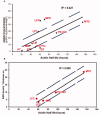Intra-articular drug delivery systems for osteoarthritis therapy: shifting from sustained release to enhancing penetration into cartilage
- PMID: 35261301
- PMCID: PMC8920370
- DOI: 10.1080/10717544.2022.2048130
Intra-articular drug delivery systems for osteoarthritis therapy: shifting from sustained release to enhancing penetration into cartilage
Abstract
Osteoarthritis (OA) is a progressive chronic inflammation that leads to cartilage degeneration. OA Patients are commonly given pharmacological treatment, but the available treatments are not sufficiently effective. The development of sustained-release drug delivery systems (DDSs) for OA may be an attractive strategy to prevent rapid drug clearance and improve the half-life of a drug at the joint cavity. Such delivery systems will improve the therapeutic effects of anti-inflammatory effects in the joint cavity. Whereas, for disease-modifying OA drugs (DMOADs) which target chondrocytes or act on mesenchymal stem cells (MSCs), the cartilage-permeable DDSs are required to maximize their efficacy. This review provides an overview of joint structure in healthy and pathological conditions, introduces the advances of the sustained-release DDSs and the permeable DDSs, and discusses the rational design of the permeable DDSs for OA treatment. We hope that the ideas generated in this review will promote the development of effective OA drugs in the future.
Keywords: Drug delivery system; intra-articular; osteoarthritis; permeability; sustained-release.
Conflict of interest statement
No potential conflict of interest was reported by the author(s).
Figures











Similar articles
-
Recent advances in intra-articular drug delivery systems for osteoarthritis therapy.Drug Discov Today. 2018 Oct;23(10):1761-1775. doi: 10.1016/j.drudis.2018.05.023. Epub 2018 May 21. Drug Discov Today. 2018. PMID: 29792929 Review.
-
Cartilage-targeted drug nanocarriers for osteoarthritis therapy.Int J Pharm. 2024 Dec 5;666:124843. doi: 10.1016/j.ijpharm.2024.124843. Epub 2024 Oct 16. Int J Pharm. 2024. PMID: 39424088 Review.
-
Progress in intra-articular drug delivery systems for osteoarthritis.Curr Drug Targets. 2014;15(9):888-900. doi: 10.2174/1389450115666140804155830. Curr Drug Targets. 2014. PMID: 25090987 Review.
-
Multi-arm Avidin nano-construct for intra-cartilage delivery of small molecule drugs.J Control Release. 2020 Feb;318:109-123. doi: 10.1016/j.jconrel.2019.12.020. Epub 2019 Dec 13. J Control Release. 2020. PMID: 31843642 Free PMC article.
-
Recombinant protein drugs-based intra articular drug delivery systems for osteoarthritis therapy.Eur J Pharm Biopharm. 2023 Feb;183:33-46. doi: 10.1016/j.ejpb.2022.12.012. Epub 2022 Dec 20. Eur J Pharm Biopharm. 2023. PMID: 36563886 Review.
Cited by
-
Ultrasonic/electrical dual stimulation response nanocomposite bioelectret for controlled precision drug release.Mater Today Bio. 2023 May 13;20:100665. doi: 10.1016/j.mtbio.2023.100665. eCollection 2023 Jun. Mater Today Bio. 2023. PMID: 37229214 Free PMC article.
-
Engineered biochemical cues of regenerative biomaterials to enhance endogenous stem/progenitor cells (ESPCs)-mediated articular cartilage repair.Bioact Mater. 2023 May 2;26:490-512. doi: 10.1016/j.bioactmat.2023.03.008. eCollection 2023 Aug. Bioact Mater. 2023. PMID: 37304336 Free PMC article. Review.
-
Effect of Low-Molecular-Weight Hyaluronate-Based Nanoparticles on the In Vitro Expression of Cartilage Markers.Int J Mol Sci. 2024 Nov 21;25(23):12486. doi: 10.3390/ijms252312486. Int J Mol Sci. 2024. PMID: 39684203 Free PMC article.
-
An Advanced Mechanically Active Osteoarthritis-on-Chip Model to Test Injectable Therapeutic Formulations: The SYN321 Case Study.Adv Healthc Mater. 2024 Dec;13(32):e2401187. doi: 10.1002/adhm.202401187. Epub 2024 Sep 24. Adv Healthc Mater. 2024. PMID: 39318108 Free PMC article.
-
Sol-gel synthesis of magnesium oxide nanoparticles and their evaluation as a therapeutic agent for the treatment of osteoarthritis.Nanomedicine (Lond). 2024;19(23):1867-1878. doi: 10.1080/17435889.2024.2382421. Epub 2024 Aug 7. Nanomedicine (Lond). 2024. PMID: 39109508 Free PMC article.
References
-
- Andres-Guerrero V, Zong M, Ramsay E, et al. (2015). Novel biodegradable polyesteramide microspheres for controlled drug delivery in Ophthalmology. J Control Release 211:105–17. - PubMed
-
- Ansboro S, Hayes JS, Barron V, et al. (2014). A chondromimetic microsphere for in situ spatially controlled chondrogenic differentiation of human mesenchymal stem cells. J Control Release 179:42–51. - PubMed
-
- Aydin O, Korkusuz F, Korkusuz P, et al. (2015). In vitro and in vivo evaluation of doxycycline-chondroitin sulfate/PCLmicrospheres for intraarticular treatment of osteoarthritis. J Biomed Mater Res B Appl Biomater 103:1238–48. - PubMed
Publication types
MeSH terms
Substances
LinkOut - more resources
Full Text Sources
Other Literature Sources
Medical
